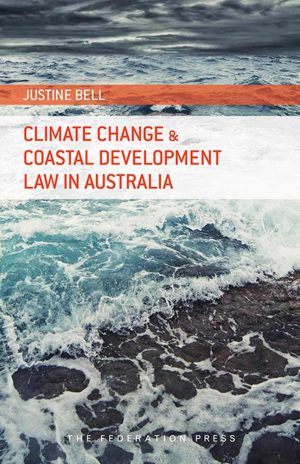The Victorian Planning System: Practice, Problems and Prospects is an accessible introduction for all those who use the Victorian planning system, including planners, lawyers, councillors, developers, design professionals and community advocates. It explains key terminology and processes in simple terms and explores how the planning system is used to pursue policy goals. This discussion is contextualised through examination of a variety of planning policy challenges, including housing affordability, activity centre planning, and climate change.
This second edition has been comprehensively revised and updated to address changes since 2017. These include the finalised Plan Melbourne 2017-2050, the “Smart Planning” program, integrated Planning Policy Framework, revisions to residential development provisions (including the Better Apartments Design Standards), and the new Environment Protection Act, among others. Other new or heavily revised content includes discussion of planning in growth areas, biodiversity offsetting for native vegetation removal, and Aboriginal heritage.
This edition also includes reconceived discussion of decision-making and regulatory design. It reviews the history of planning system reform in Victoria and explores why the system is still not as effective, efficient or transparent as it should be. In response, the book outlines a vision of a new planning paradigm that is more capable of achieving bold policy goals. It is essential reading for all Victorian planning professionals.
Acknowledgments
Preface
Table of Cases
Table of Statutes
Introduction: Urban Planning and the Regulatory Challenge
1. The Building Blocks of the Victorian Planning System
2. Planning Permits and the Application Process
3. Planning Decisions and System Design
4. Planning Appeals
5. Complications
6. Amending Planning Schemes
7. Shops and Houses
8. Planning and the Environment
9. Quandaries
Conclusion – System Review and Reform
Chapter Notes
Glossary
Further Reading and Resources
Bibliography
Index
Stephen Rowley has recently released a second edition of his definitive book The Victorian Planning System – Practice Problems and Prospects first published in 2017 … This new edition has been significantly revised and updated throughout. It provides both a clear and comprehensive introduction and explanation of the Victorian planning system, and a compelling review and critique of its design and performance… Rowley’s writing style is clear and engaging …
A careful reading should also provide planners with more confidence in their role, as well as with greater insight into why things are as they are and what ought to be done. I encourage all planners in Victoria to get hold of a copy and digest and consider its contents.
Robin Goodman RPIA (Fellow), Planning News Volume 49 No.6 July 2023
Review of previous edition
My book, The Victorian Planning System: Practice, Problems and Prospects … is intended both as an introduction to, and critique of, the Victorian Planning System. While an entirely new book, it is intended partly as a successor to Des Eccles and Tannetje Bryant’s classic Statutory Planning in Victoria…
A major theme of the book is that planners need to stop thinking in terms of a divide between statutory and strategic planning. I argue that it is vital to break down the perceived division between plan-making/policy roles, and the frequently-derided regulatory aspects of planning. Planning strategies that are not accompanied by a sophisticated and resolved regulatory expression are doomed to fail. …
I … close the book with some specific suggestions about how the current system could be improved. With signs from the government that we may see significant reform in the next 12 to 18 months from their ‘Smart Planning’ program, I hope the book can contribute to ongoing discussion about how the planning system can better achieve its goals. Read full review…
By the author, Stephen Rowley, Planning News, March 2017
Someone once told me that planning was the second most political profession after politics. In my experience, this could not be truer. Public and media interest in planning has increased over time, particularly during Covid where discussions about 20-minute neighbourhoods and living locally really took hold. The list of stakeholders advocating for individual outcomes are never ending. The community’s expectation in their ability to participate and influence planning decisions is also growing.
The contestability of planning is its greatest challenge, but ultimately outcomes must be balanced for the public good. There has never been a better opportunity for planners to lead and advocate publicly for decent outcomes. Planning at its core, is about places for people. It should be about creating equal opportunities, protecting our natural environments and securing our future liveability. So why is it that we fail to convey these messages simply and clearly when we try to explain what we do and how we do it?
Following numerous reviews and reforms, our planning system has evolved with our State, to capture and reflect the shared values we hold. This includes our garden suburban streets and neighbourhoods, pristine coastlines, natural landscapes, cultural and indigenous heritage places, country towns, rural farmlands, and of course, Melbourne’s green wedges. This makes Victoria special and is matched with consistent population growth and strong investment.
However, it is an arduous task explaining our planning context and framework to stakeholders and community groups. Many view it as cumbersome, contradictory and full of unnecessary process. This is exacerbated by the technical complexity, terminology and jargon that is inaccessible and hard to follow. What’s an overlay schedule? What’s the difference between the councils and State’s role in planning? What’s an environmental impact assessment and why are they not mandated with every application? What’s the difference between VCAT and Panels Victoria? The questions are endless.
I left my role as the former planning minister with a deep respect and appreciation for the integrity and resilience of planners. In amongst the criticisms faced from the broader public and industry, we must continue to advocate for good outcomes, and to be able to explain our planning system is critical.
Dr Rowley’s book provides a comprehensive overview of our Victorian planning system that clearly and simply covers the most difficult of topics in planning. This book should be essential reading for anyone with an interest in planning. It aids us in explaining why our system is the way it is – for better or worse – and assists in our continual advocacy for shaping a better society and future for all Victorians.
The Hon Richard Wynne
Minister for Planning 2014–2022
Minister for Housing 2006–2010; 2018–2022







